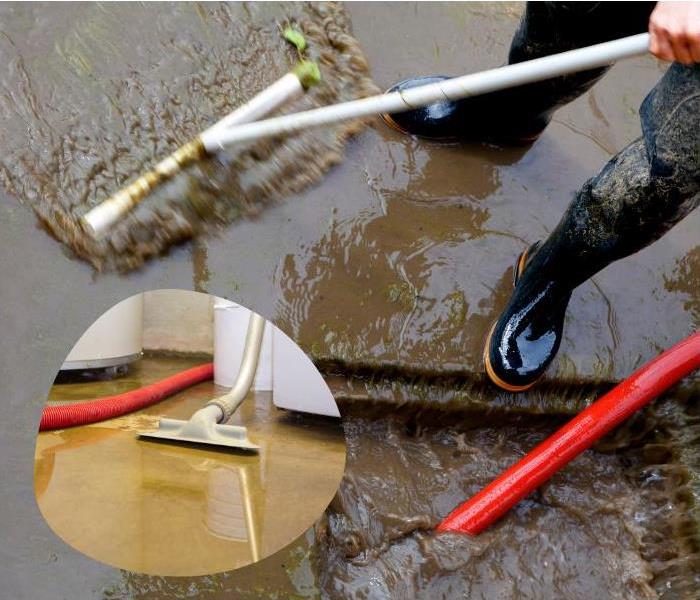5 Essential Steps for Effective Flood Cleanup in Layton, UT
8/31/2024 (Permalink)
Flooding can be a devastating event for homeowners, causing significant damage to property and belongings. In Layton, UT, where weather conditions can occasionally lead to flooding, it's crucial to understand the steps involved in flood cleanup to ensure a swift and effective recovery. Here are five essential steps for flood cleanup that can help restore your home and safeguard your health and safety.
1. Ensure Safety First
Before beginning any flood cleanup efforts, safety should be your top priority. Floodwaters can be hazardous, containing contaminants and posing electrical risks. Follow these safety tips:
Wait for Clearance: Do not enter your home until local authorities have confirmed that it is safe to do so. Floodwaters may contain sewage, chemicals, or other harmful substances.
Turn Off Power: If it is safe to do so, turn off electricity at the main breaker to avoid electrical shock. Avoid touching electrical equipment while standing in water.
Wear Protective Gear: Equip yourself with waterproof boots, gloves, and masks to protect against contaminants and debris.
2. Document the Damage
Once it's safe to enter your home, document the damage thoroughly. This step is crucial for insurance claims and understanding the extent of the cleanup required.
Take Photos and Videos: Capture detailed images and videos of all affected areas and items. This documentation will be essential for your insurance claim and for assessing the damage.
Make a List: Create a comprehensive list of damaged items and areas. Note any structural damage, such as compromised walls, ceilings, or floors.
3. Begin the Water Removal Process
Removing standing water quickly is critical to prevent further damage and mold growth. Here’s how to approach this step:
Use a Pump: If there is significant standing water, use a submersible pump to remove it. Make sure the pump is suitable for the type of water you’re dealing with, whether it's clean or contaminated.
Wet/Dry Vacuum: For smaller amounts of water, a wet/dry vacuum can be effective. Ensure the vacuum is rated for water use and follow the manufacturer’s instructions.
Remove Wet Materials: Take out any wet materials, such as carpets, rugs, and furniture, that cannot be salvaged. Place them outside in a dry area for disposal or cleaning.
4. Clean and Dry Affected Areas
Proper cleaning and drying are essential to prevent mold growth and further damage. Follow these guidelines:
Clean Surfaces: Scrub affected surfaces with a mixture of water and detergent. Use a disinfectant to kill bacteria and prevent mold. Be sure to clean walls, floors, and any other surfaces that came into contact with floodwater.
Dry Out the Area: Use fans, dehumidifiers, and open windows to promote air circulation and speed up the drying process. Aim to remove moisture within 24-48 hours to prevent mold growth.
Inspect for Mold: After drying, inspect the area for signs of mold growth. Mold can begin to grow within 24-48 hours of exposure to moisture, so prompt action is crucial.
5. Assess and Repair Damage
Once the area is clean and dry, assess the damage and begin repairs. Address any structural or cosmetic damage to restore your home.
Inspect for Structural Damage: Check for any structural issues, such as weakened walls, floors, or ceilings. If you find significant damage, consult a professional contractor for repairs.
Replace Damaged Materials: Replace any damaged building materials, such as drywall, insulation, and flooring. Use water-resistant materials where possible to reduce the risk of future issues.
Seek Professional Help: For extensive damage, or if you’re unsure about the repair process, consider hiring a professional restoration service. SERVPRO ® of Layton offers expertise in flood cleanup and can help you navigate the complexities of restoring your home.
Flood cleanup is a critical process that requires careful attention to detail and a commitment to safety. By following these five essential steps—ensuring safety, documenting damage, removing water, cleaning and drying, and assessing and repairing—you can effectively manage the aftermath of a flood and restore your home to its pre-flood condition. In Layton, UT, where flood events can occur, being prepared and knowing the steps to take can make all the difference in a successful recovery.
For professional assistance with flood cleanup and restoration, SERVPRO ® of Layton is here to help. Our team of experts is equipped with the knowledge and tools to handle any flood damage, ensuring a swift and thorough restoration process. Contact us today to learn more about our services and how we can assist you in getting your home back to normal.






 24/7 Emergency Service
24/7 Emergency Service
